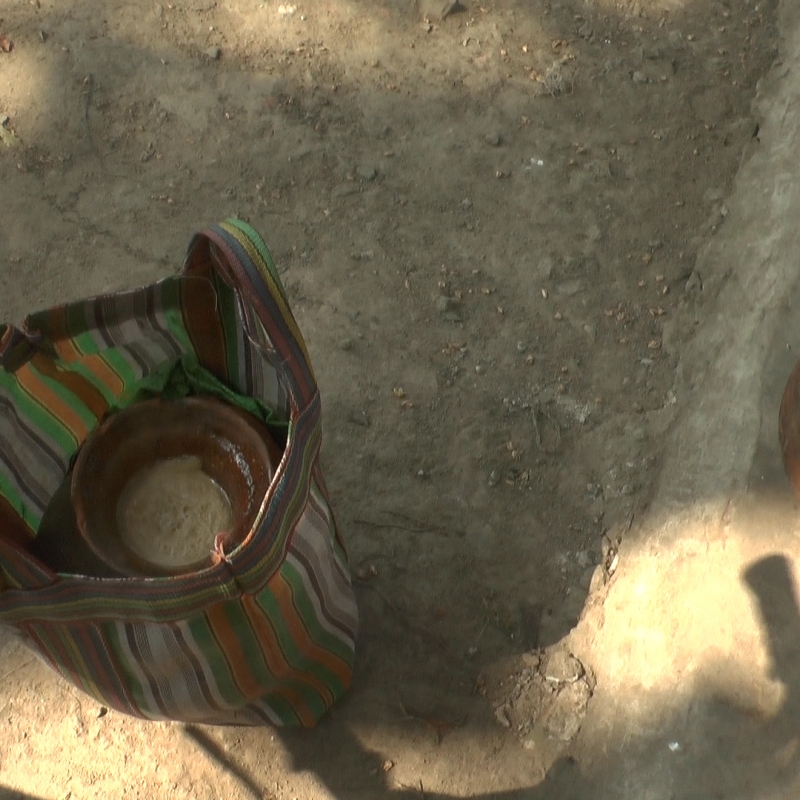There is no edible commodity that has been the cause of so much inhumanity and pain but also so much delight and pleasure as sugar. The sparkling white crystals of sucrose have played multiple roles in human history. Sugar has been offered as a food offering to Hindu gods, it has been sculpted into exquisite figures for medieval Egyptian califs and it has been stirred into the tea and coffee cups of bourgeois, early modern Europeans. The last of these uses would be the prime cause of sugar’s most egregious sin, the trans-Atlantic slave trade. With the coming of the industrial revolution, sugar became ever purer, cheaper and omnipresent, its overabundance in the diet of people the world over bemoaned by nutritionists and public health advocates alike. They have reason to worry, it’s hard to say no to such a delivery vehicle of hard-wired pleasure.
From Cane to Sugar
Sugar, or more technically sucrose, is a disaccharide made up of the two monosaccharides—fructose and glucose. Due to its chemical structure, sugar (but not its constituent parts) will crystallise into a solid, which has had implications for confectionary as well as transportation and storage over the millennia. The prime source of refined sugar today is sugar cane (Saccharum spp.) and sugar beets (Beta vulgaris), both of which are roughly 15 per cent sugar by weight (FAO 1994). As of 2009, roughly 80 per cent of world production came from cane with beets making up virtually all the remainder (FAO 2009). Regionally, other sources have local culinary importance though their commercial impact is negligible, for example, maple sap is boiled down to produce sugar in eastern North America and sugar palms (Arenga saccharifera, but also others) are tapped primarily in South and Southeast Asia to produce palm sugar.
Botanists believe that sugar cane originated in the New Guinea region thousands of years ago. There, stalks of Saccharum officinarum L. were presumably cloned from an earlier wild variety (S. robustum). It is likely that traders, or other travellers, transported the cane from the Southeast Asian islands to the Asian mainland where it was hybridised with a widely distributed local variety S. spontaneum L., resulting in varieties that were subsequently long used in India (S. barberi Jew) and China (S. sinense Roxb) (Manners 2011:96).
It is unclear just when the imports occurred but it must have been well before 500 BCE since by this point we begin to see South Asian references to something called sarkara, a Sanskrit term for granular sugar. The word eventually migrated into European languages by way of Persian (shakar) and Arabic (sukkar), resulting in ‘sugar’, zucchero, sucre, zucker and so on.
The simplest way of producing sugar from cane juice is to boil away the liquid, adding some sort of catalyst to precipitate out the impurities. The result of this is a moist, molasses-rich brown sugar, referred to as jaggery in Indian English and piloncillo or rapadura (as well as other regional terms) in Latin America. Further refining yields even purer grades. By 300 BCE, a north Indian document already mentions five kinds of sugar including a type called khanda or rock sugar. It is here that English eventually picked up ‘candy’. By the Gupta era (300–550 CE), commercial cultivation of sugar cane had spread across the Ganges plain (Galloway 1989:20). In South Asia, due to the climate and long history of sugar cane cultivation, sucrose was never the rare luxury that it would later be in Europe and the Middle East. While early prices are unavailable, some indication of its commonness comes from Abul Fazl, the vizier (high minister) to the Mughal emperor Akbar in the late 1500s (Krondl 2011:36). The minister calculated that white sugar cost about three times the price of rice and the price of brown sugar was almost the equivalent. To give this context, a skilled English labourer of that period would have needed to work a full day to purchase a cup of sugar, whereas his Indian counterpart could have purchased five times as much for a day’s labour (Sansani 2006)!
Cane sugar was widely traded throughout Asia long before Europeans entered the trade. In the 16th and 17th centuries, there were two main sources of the commodity, with South Asia roughly divided into two markets. Chinese sugar, mostly exported from Guangdong and Fujian, supplied Japan and Southeast Asia, while west of Malacca it was Bengali sugar that furnished the needs of South Asia as well as western India, Persia and beyond (Mazumdar 1998:71).
Palm Sugar
The use of palm sugar may be as ancient as that produced from cane. Singhalese chronicles from as early as the second century BCE distinguish it from the cane-derived variety, and medieval sources from Tamil Nadu to Indonesia attest to its widespread use.[1] To collect the sap, which contains some 20 per cent sucrose, the terminal bud or inflorescence of the palm is tapped and the liquid collected, or in the case of the date palm the trunk is the source of the sap. To produce sugar, the liquid needs to be promptly boiled away, otherwise it will ferment into toddy or wine. This wine has, at least since the middle ages, been distilled into arak, a potent and occasionally dangerously high-in-alcohol tipple. Today, some thirty varieties of palm are commonly used in this way in Africa, Asia and Latin America. The use of palm sugar (also, somewhat confusingly, referred to as jaggery in India) tends to be restricted to South and Southeast Asia (Dalibard 1999). Despite being marginally lower in sucrose than palm sugar, sugar cane is much more suitable to large-scale cultivation than palm trees.[2]
Palm jaggery, or ‘khejur gur’ as it is called locally, is especially appreciated in Indian West Bengal and Bangladesh where it widely used to flavour a wide variety of sweets during the winter tapping season. Here the source is almost exclusively the date palm, Phoenix sylvestris. The trees may be tapped as early as October but the greatest yield is in midwinter when the nights are the coolest. The sap was traditionally collected in pots smeared with slaked lime and collected in the morning to minimise fermentation (Banerji 2012). Palm jaggery has a noticeable difference in composition than its cane counterpart containing more protein and minerals resulting in a noticeably distinctive taste.[3] Date palm sugar is seldom refined into pure sucrose, rather it is used in one of three forms: as a syrup, in a thicker grainier form, or as thick fudgy mass. It is widely used in sweet making and preferred over cane jaggery when available.
The Spread of Sugar Cultivation
Just when sugar cane started moving West from the Subcontinent is a little unclear but it was definitively established in Persia by 600 CE. References to its cultivation multiply in the early expansionary phase of Islam, especially in Egypt, Palestine and Syria in the seventh century, and soon after in the Western Mediterranean. While the plant itself was quickly established, it took some two centuries before the technology of irrigation and refining caught up sufficiently to make a commercial sugar industry viable (Galloway 1989:33). The Mediterranean has far from ideal conditions for growing sugar cane due to the cool climate and the relative paucity of rainfall; high fuel costs also made refining an expensive proposition. Consequently, it was dear, even if precise prices are hard to quantify; rough estimates put its price at about ten times that of wheat in the Eastern Mediterranean in the early years of the second millennium (Krondl 2011:379). But its very luxury made it a highly desirable item of conspicuous consumption. In Europe, it was distributed by apothecaries as a pricy spice, while Middle Eastern potentates commissioned vast sugar sculptures to impress their subjects. In 1049, a Persian visitor to the Egyptian Fatimid court recorded that for a single banquet some 70,000 kilos of sugar were appropriated, in part to create ‘thousands of images and statuettes of sugar’ (Landolt, Sheikh and Kassam 2008:75). Several hundred years later, Europeans would follow suit. An especially developed sugar sculpture tradition flourished during the Italian Renaissance and Baroque eras with some of the periods’ most renowned artists using sugar as a medium. Sugar scholar June di Schino has even identified drawings for sugar sculpture by the great Italian architect and sculptor Gian Lorenzo Bernini (1598–1680) (Di Schino 2005).
The Mediterranean was a testing ground for the technology and agricultural systems that would later structure the Atlantic sugar plantation economy. Early Arab experiments in irrigation and cultivation practices made the tropical crop viable in a temperate climate. Extraction technology long lagged however. The cane stalks were first milled by using rotary millstones driven by oxen or horses (water power was occasionally used as well) with the remaining juice squeezed out using a screw press. It wasn’t until the early 17th century that a vertical, three-roller mill—possibly a Chinese invention—was introduced into Latin America (Galloway 1989:39). Once extracted, the juice would be boiled down to the point where it would begin to crystalise. The resulting slurry of sugar and molasses was then drained of the liquid molasses, typically in earthenware cones. The sugar might then be redissolved and the process repeated (possibly several times) to produce ever purer grades. Nonetheless, early confectionary manuals always give directions on how to purify the sucrose even further, often using protein in the form of blood or egg whites to absorb the impurities. In the early 1300s, Florentine merchant Francesco Pegolotti identified numerous forms the sugar could take, whether as powder, lozenges, lumps, large loaves as well as rock sugar candy, refined sugar and even sugar scented with violets and roses (Krondl 2011:89).
It often made sense to refine the sugar at the point of import rather than its place of production due to the cost of fuel in the cane-producing regions. Venice, in particular, became an early sugar-refining centre. At first, this was the case because the strategic contacts with the Muslim world the Republic had developed through the spice trade gave it access to Arab sugar. Later, investors were able to exploit Venetian holdings in Cyprus and Crete though a sophisticated, vertically integrated financing model. The Venetian innovation was to create a colonial system where capital was raised in the metropolis to pay for the considerable outlay necessary for the irrigation and processing works on its Eastern Mediterranean dependencies, then ship the raw sugar to Venice to be refined. This model was largely adopted in the Western Atlantic. So was slavery. The cultivation of sugar cane is highly labour-intensive, and to keep costs down, peasant as well as slave labour were used by both Muslims and Christians in the medieval world.
The Transatlantic Sugar Trade
The first European experiments in sugar monoculture outside of the Mediterranean took place on several islands off the western coast of Africa, first Madeira, then the Cape Verde and Canary Islands. Whereas Madeira followed the old model of using primarily peasant labour to work the fields, Spanish and Portuguese plantation owners on Saõ Tomé in the Cape Verde Islands and in the Canaries soon turned to slave workers imported from the nearby West African coast, thus setting the pattern for the transatlantic colonies. These West African islands significantly increased the European supply of cane sugar in the late 16th and early 17th centuries, stimulating an elite taste for sugary dishes and ornate sugar sculptures.
This ever-increasing trickle of East Atlantic cane sugar turned into a flood as the New World possessions of almost every European colonial power came on stream. Christopher Columbus introduced sugar cane to Hispaniola (today’s Haiti and Dominican Republic) as early as 1493. Having spent time in Madeira—he was even married to a Madeiran—the would-be discoverer of the eastern route to Asia quickly recognised the sugar-growing potential of the Caribbean Islands. However, it would take more than a century before the West Indies became significant sugar producers. In the meantime, it was the Portuguese colonies in Brazil that led the way, becoming Europe’s prime supplier of sugar in the late 1500s. It was here that the slave plantation model first introduced in Saõ Tomé was perfected. An initial attempt to compel the native population to work the cane fields was eventually abandoned as the workers died, or simply disappeared into the interior. By the 1570s, the planters had turned to West Africa to make up the labour deficit, initiating a transatlantic trade in human beings that would last over 300 years. By the time slavery was abolished in Brazil in 1889, the country alone was responsible for the import of an estimated four million Africans, out of a total of some eleven million slaves transported to the New World (Thomas 2013:804).
England, France, the Netherlands and even Denmark joined Portugal and Spain in establishing sugar plantations in South America, Central America and the Caribbean. In the West Indies, disease and genocide largely wiped out the indigenous population, which was replaced by a mixture of European settlers and African slaves. The mortality rate among the new arrivals was horrendous. To give some sense of this, the French colony St. Domingue (today’s Haiti) had to import 8,64,000 slaves to raise its slave population from 4,000 in 1680 to 4,80,000 in 1791 (Galloway 1989:115). The colonial plantation system was largely financed by European absentee landlords who also collected most of the profits. Production increased exponentially: whereas Brazil was exporting on the order of 10,000 tonnes in 1600, at a time of little competition, Jamaica alone was producing seven times that number by 1800 (out of some 245,000 tonnes then produced worldwide).[4]
The demand for sugar was such that even as the supply increased the price remained relatively steady. That demand was primarily driven by the European adoption of various drug beverages in the 1600s, primarily coffee on the continent and tea in Britain, but also drinking chocolate in the salons of the well-heeled. In the United Kingdom, especially, the import graphs of sugar and tea are almost identical in shape.
In the nineteenth century, a combination of economic reality and ethical commitment gradually pushed for the prohibition of the slave trade and eventually the abolition of slavery itself. From an economic standpoint, once the slave trade was abolished, there was no longer a source of new labour to work the plantations. This occurred even as sugar beets became a financially viable alternative to cane. In the meantime, the intellectual and moral tenor of Enlightenment Europe would no longer abide the enslavement of human beings. French revolutionaries abolished slavery in 1794 (admittedly reinstated by Napoleon eight years later), while in England, religious groups agitated against the institution, eventually leading to a slaving ban in 1807 and full abolition in 1838. Not coincidentally, an English slave sugar boycott gave impetus to an increase in sugar production in Bengal, then ruled by the East India Company. A further boon to Indian sugar was that, with abolition, tariffs preferential to West Indian sugar were removed. As a consequence, Indian sugar exports doubled from roughly 3,500 tonnes to 6,300 tonnes between 1837 and 1838 and, with the removal of tariffs, reached almost 28,000 tonnes two years later (Derr 1949:59–60). Admittedly this was still a pittance out of a world production that was now approaching a million tonnes (Galloway 1989:132).
The Ubiquity of Sugar
With the 19th century, sugar became even cheaper, ceasing to be a luxury and—as Sidney Mintz (1985) has thoroughly documented—turning into a staple food of the working industrial classes, especially in Britain. By 1900, per capita intake in United Kingdom had reached 41 kilograms, meaning the average Briton was consuming more than 400 daily calories in the form of sugar (Derr 1949:532)! In the 20th century, many developed and even segments of underdeveloped countries would reach or exceed this figure, leading to epidemics of diabetes and heart disease.
The enormous increase in sugar consumption was made possible by vast improvements in technology. Steam, and then electricity, to power the sugar mills replaced waterwheels and oxen at the point of production, while vacuum evaporator pans made obsolete the old system of boiling cane juice in giant kettles. Sugar beets came to compete with cane sugar after Franz Karl Achard first established a farming and refining operation in Silesia in 1801. Heavily supported by government tariff preferences in Central and Eastern Europe, beet sugar production would come to exceed cane sugar by 1880 and for several decades to follow. As industrial food production—in biscuits, candy and other sugar-hungry products—exploded in the later part of the 19th century, the demand for the white crystals grew by leaps and bounds, from about a million tonnes in 1850 to some 8 million 50 years later, 50 million in 1960, and 180 million tonnes in 2013.[5]
Advances in chemistry also made it possible to manufacture both caloric and non-caloric competitors to sucrose. The most prominent of these was corn syrup, but most especially high-fructose corn syrup (HFCS), the latter developed by two American chemists in 1957. Due to US government crop-support policies that keep the price of sugar high and corn low relative to world markets, HFCS has become ubiquitous in American industrially produced foods from Coca-Cola to ketchup. In 1990, the United States produced some 70 per cent of the world’s supply (Vuilleumier 1993). Non-caloric sweeteners such as saccharin (Sweet'N Low), Neotame (NutraSweet) and sucralose (Splenda) are not only used to sweeten beverages worldwide but find their way into sweet foods made for dieters and diabetics.
In the 2010s, at least in North America, sugar became the new dietary bogeyman, replacing fat and carbohydrates as the food item most vilified in the press. There is good reason for this. Americans eat vast amounts of sweeteners, some 58 kg yearly per capita in 2015, down ever so slightly over the last decade. By comparison, Indians consumed some 19 kg of refined sugar in 2014, but that number has increased over 400 per cent in the last 50 years.[6] It’s hardly coincidence that since 1980 the Indian diabetes rate has doubled (Mascarenhas 2016).
So, is sugar all bad? While a certain focus on the nutritional aspects of sugar overconsumption is undoubtedly valuable, it can also be reductive and puritanical, forgetting the cultural, culinary and sensual role sugar has long played and continues to play in every aspect of human society. Yet even with sweetness moderation is necessary.
Notes
[1] For the Singhalese reference see Moody 1864:104. In Tala Vilasam (8th Century C.E.?) the poet Arunachalam mentions for 801 uses of the palm, including jaggery; as cited in Blatter 1926:203. For the medieval use in Java see Pigeaud 2013:430.
[2] Khieu Borin estimates the yield per hectare for palm sugar in Cambodia to be about 21,600 tonnes; see Borin 2017; whereas the yield per hectare from cane is three to four times as much; see Olukunle 2016.
[3] Cane jaggery contains some .25% protein and some 9.27 mg iron per 100 g, while date palm jaggery has 1.46% protein and 11.01 mg per 100g; see Panda 2011:51.
[4] For the Brazil and Jamaica figures see Galloway 1989:51. For world production in 1800 see Gudoshnikov, Jolly and Spence 2004:9.
[5] See Galloway 1989:132 for the first 2 figures; for the last number see USDA 1961 and FAO 2017.
[6] The American figure is from USDA 2016, the second from FAOSTAT 2017. The comparison is not strictly analogous since it excludes the many other forms of sugar, many commercially unrecorded, in India. FAO figures put US refined sugar consumption in 2013 at 29 kg but ‘other sweetners’ add another 31 kg to that figure!
References
Banerji, Chitrita. 2012. ‘A Sweet Fragrance in Winter.’ Gastronomica 12 (Spring): 83–86.
Blatter, Ethelbert. 1926. The Palms of British India and Ceylon. London: Oxford University Press.
Borin, Khieu. ‘The Sugar Palm Tree as the Basis of Integrated Farming Systems in Cambodia.’ Online at http://www.fao.org/livestock/AGAP/frg/conf96.htm/khieu.htm (viewed on January 31, 2017).
Dalibard, Christophe. 1999. “Overall view on the tradition of tapping palm trees and prospects for animal production.” Online at http://www.fao.org/ag/aga/agap/frg/lrrd/lrrd11/1/dali111.htm
Deerr, Noël. 1949. The History of Sugar. London: Chapman and Hall.
Di Schino, June. 2005. I fasti del banchetto barocco. Rome: Diomeda Centro studi e ricerche.
FAO (Food and Drug Organization of the United Nations). 1994. ‘Definition and classification of commodities.’ Online at http://www.fao.org/es/faodef/fdef03e.HTM
———. 2009. ‘Agribusiness Handbook: Sugar Beet White Sugar.’ Online at http://www.fao.org/fileadmin/user_upload/tci/docs/AH1-(eng)Sugar%20beet%20white%20sugar.pdf
———. 2017a. ‘Food Supply - Crops Primary Equivalent.’ Online at http://www.fao.org/faostat/en/#data/CC (viewed on January 31, 2017).
———. 2017b. ‘Trade and markets: Sugar.’ Online at http://www.fao.org/economic/est/est-commodities/sugar/en/ (viewed on January 31, 2017).
Galloway, J. H. 1989. The Sugar Cane Industry: An Historical Geography from its Origins to 1914. Cambridge [England]: Cambridge University Press.
Gudoshnikov, Sergey, Lindsay Jolly, and Donald Spence. 2004. The World Sugar Market. Cambridge, UK: Woodhead Publishing Ltd.
Krondl, Michael. 2011. Sweet Invention: A History of Dessert. Chicago, Illinois: Chicago Review Press.
Landolt, Herman, S. Sheikh, and Kutub Kassam. 2008. An Anthology of Ismaili Literature: A Shi'i Vision of Islam. London: I.B. Tauris.
Manners, J.M. 2011. ‘Functional Genomics of Sugarcane.’ In Advances in Botanical Research, volume 60, edited by Jean-Claude Kader and Michel Delseny, 89–168. New York: Academic Press.
Mascarenhas, Anuradha. ‘World Health Day: India among top 3 countries with high diabetic population.’ The Indian Express, Pune, April 7, 2016. Online at http://indianexpress.com/article/lifestyle/health/diabetes-cases-422-mn-worldwide-india-no-2-who-lancet-world-health-day/
Mazumdar, Sucheta. 1998. Sugar and Society in China: Peasants, Technology, and the World Market. Cambridge [Mass.]: Harvard University Asia Center.
Mintz, Sidney. 1985. Sweetness and Power: The Place of Sugar in Modern History. New York: Penguin Viking.
Moody, Sophy. 1864. The Palm Tree. London: T. Nelson.
Olukunle, Oni Timothy. 2016. ‘Economic analysis of profitability and competitiveness of sugarcane enterprise in Nigeria.’ Journal of Development and Agricultural Economics 8.6:160–171. DOI: 10.5897/JDAE2015-0636.
Panda, H. 2011. The Complete Book on Sugarcane Processing and By-Products of Molasses. Delhi: Asia Pacific Business Press.
Pigeaud, Theodore G. Th. 2013. Java in the 14th Century: A Study in Cultural History. Dordrecht: Springer Science & Business Media.
Sansani, Shahar. 2006. ‘Prices, wages, crop yields and land revenues in the Mughal Empire, from c. 1595 onwards.’ Online at http://gpih.ucdavis.edu/newsite/files/Mughal_Empire_c1595_&_later.xls
Thomas, Hugh. 2013. The Slave Trade: The History of the Atlantic Slave Trade 1440–1870. New York: Simon and Schuster.
USDA (United States Department of Agriculture). 1961. ‘Sugar report.’ Online at http://usda.mannlib.cornell.edu/usda/nass/SugaMarkSt//1960s/1961/SugaMarkSt-08-00-1961.pdf
———. 2016. ‘Table 50-U.S. per capita caloric sweeteners estimated deliveries for domestic food and beverage use, by calendar year. Online at https://www.ers.usda.gov/data-products/sugar-and-sweeteners-yearbook-tables/
Vuilleumier, S. 1993. ‘Worldwide production of high-fructose syrup and crystalline fructose.’ The American Journal of Clinical Nutrition 58.5: 733S.













